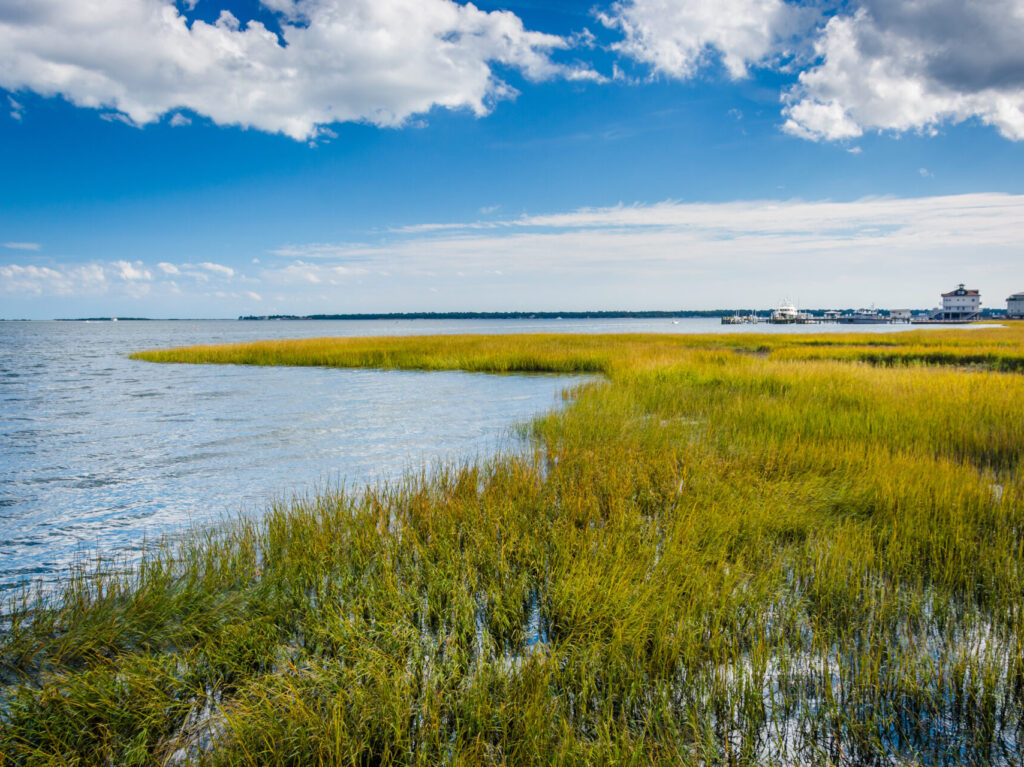
Innovative Stormwater Treatment System Opens
November 7, 2023
Great Ecology Welcomes Sofia!
December 5, 2023
Tidal Wetlands: A Critical Resource for Fisheries
Author: Carter Teasdale
On November 21st we reflect on the important role sustainable fisheries, and the people who contribute to them, play in our lives. Today is World Fisheries Day and we feel it is the perfect time to share more about the important role tidal wetlands play in healthy fisheries, the environment, and the economy. This begs the question; What is a tidal wetland? A tidal wetland, more specifically a salt marsh, is a body of water affected by tides, while still being somewhat protected from the sheer force of the surf.
Tidal wetlands serve recreational, ecological, and commercial functions. A few recreational uses of marshes include ecotourism, boating, hunting, trapping, birdwatching, hiking, and fishing. A variety of commercially important species rely on tidal marshes for some, or even the entirety of their life cycle. Blue crabs (Callinectes sapidus), oysters, clams, shrimp, snook (Centropomus undecimals), red drum (Sciaenops ocellatus), and seatrout (Salmo trutta trutta) are examples of species whose populations are dependent on tidal marshes.
Not only do salt marshes provide goods, but they also provide a vital service to our infrastructure. Vegetation in tidal wetlands helps protect against damage and casualties caused by storm surge and flooding. Additionally, this vegetation prevents shoreline erosion, and is an essential factor in coastal resilience, not to mention, the flora in these marshes often assists in slowing currents, further preventing flooding. Storm protection services provided by tidal wetlands are valued at over $23 billion per year. Vegetation in marshes also acts like a filter, naturally improving water quality as it converts nutrients into plant matter. Furthermore, this plant matter creates habitats and sources of food for a plethora of animal species. Likewise, the riparian vegetation causes submerged sediment to precipitate, promoting improvements in water quality.
Great Ecology’s San Dieguito Lagoon Wetland Restoration in Del Mar, California offers an example of a restored tidal wetland. What was once an 11-acre overflow parking lot is now a viable salt marsh, providing all of the aforementioned benefits to the environment around it. Currently, we are conducting a 5-year maintenance and monitoring plan to ensure the success of this beautiful habitat.
Ecology also utilized the natural filtration characteristics of wetlands in the design of our Del Mar Fairgrounds Treatment Wetland project. This constructed wetland system, part of an innovative stormwater management system for the Fairgrounds, has an estimated capacity of 1.7 million gallons and utilizes native wetland plants to remove 50%-75% of nutrients from site stormwater runoff. Located in the middle of the Fairground’s horse racing track, the treatment wetland is visible to hundreds of thousands of people each year, making the aesthetic appeal of natural wetlands a convenient benefit. Besides being charming, the wetland is also far more cost effective than non-ecologically based counterparts.
Visit our Projects page to learn more about our salt marsh work.

